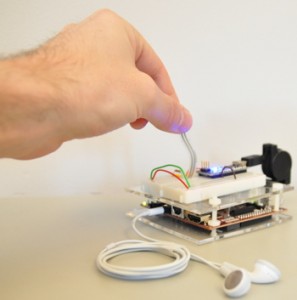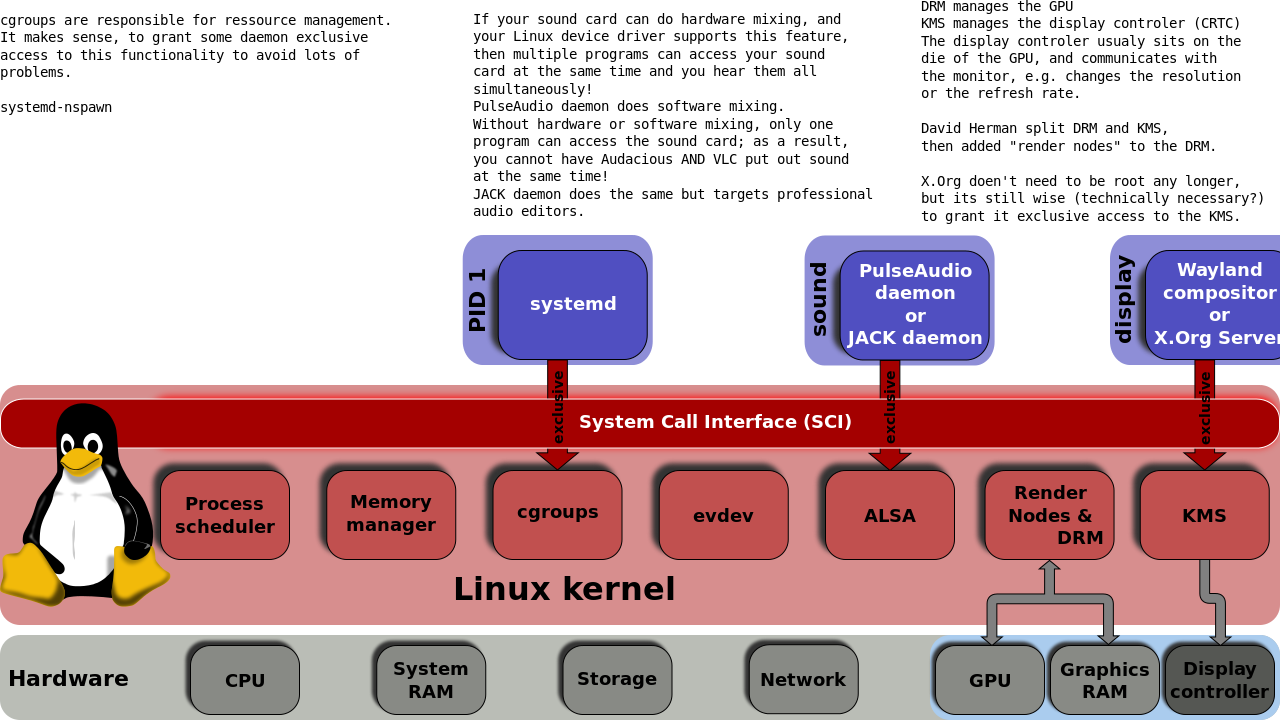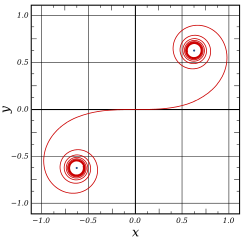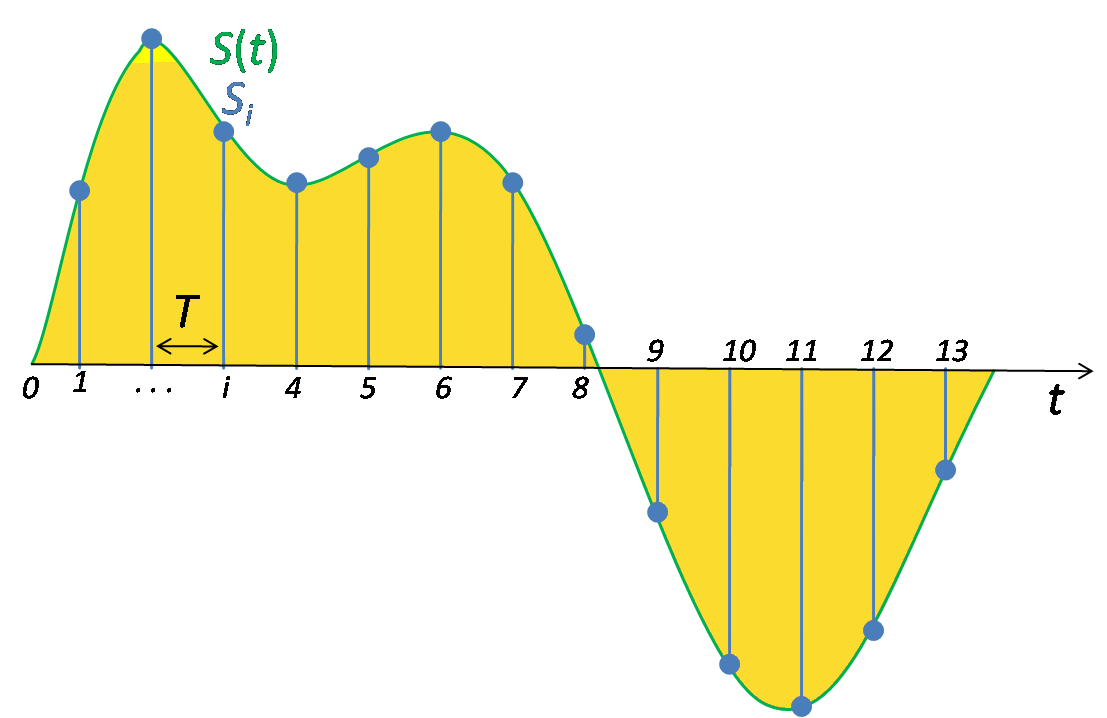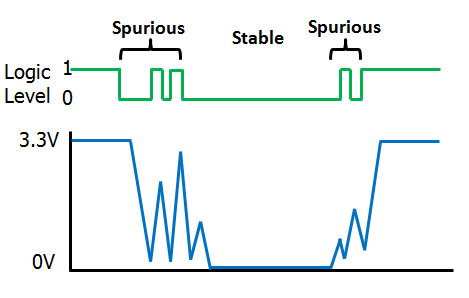事實上『 JACK 』相關的『 Applications 』應用軟體族類眾多︰
‧ Audio File Editors
‧ Control Applications
‧ DJ Software
‧ Effects Processors
‧ Graphics Applications
‧ Live Loopers
‧ Media Players
‧ Metering and Analysis
‧ Mixers
‧ Multi-track sequencers and HDR systems
‧ Music Notation Editors
‧ Programming Libraries
‧ Radio
‧ Simple Recorders
‧ Sound Generators
‧ Streamers
‧ Tuners
‧ Utilities
‧ Video Applications
‧ VOIP
‧ VST
因為文本系列之目的,我們選擇了其中的一小部份。建議讀者自行瀏覽網頁,或許可以找到很多極好的『音樂』軟件。此處我們僅僅介紹兩個已經用過的軟體,導引讀者進入『插頭』的世界而已。
假使你順著『插頭』應用軟件的鏈結走,想要了解那個軟體的用法 ,也許你會訝異所找到的內容。舉例來說︰
【 jaaa 】
Welcome to FA’s LinuxAudio page
Jaaa
Jaaa (JACK and ALSA Audio Analyser, is an audio signal generator and spectrum analyser designed to make accurate measurements.
───
【 meterbridge 】
JACK Meterbridge
This is the webpage for a software meterbridge for the UNIX based JACK audio system.
It supports a number of different types of meter, rendered using the SDL library and user-editable pixmaps.
───
這裡所擷取的內容,就是那兩個軟體主要的說明了。就像
《概念拼圖︰Linux 手冊!》文本所言︰
The Linux Document Project 這個文件計畫始於 1992 年,二十二年過去了,到了今天也有了 WiKi ,雖然已經有了相當多的文件和資料 ,但是對大多數人來說,想要用的資料卻總是『找不到』。也許對許多軟體工程師來講,寫『使用手冊』是非常令人討厭的事,尤其針對快速發展,經常改版的軟體;當然也有很多開源軟體文件寫得很好,例如說功能強大的自由辦公室套件 Libre Office,它的文件就像真的書本一樣。那麼對一些已有『手冊』manual 的命令呢?很多使用過 man 來讀命令手冊的人 ── 比如打 man dmesg ︰dmesg 的 命令手冊 ──,都覺得十分難讀!為什麼呢?試著再打一下『 man man 』,你就了解了。然而,為什麼不是呢?最早的『程式設計師』手冊,寫於 1971 年,已經四十多年前了,主撰者包括 了Dennis Ritchie 先生,今天知名的『 C 語言』的創始者。只是那個時代最好的的電腦,功能都比不上今天的一個小微處裡器, 更不會用『叫什麼 troff 』的文書處理程式下指令來寫文件??世界上,或許不只空間會有距離,時間也會產生隔閡;也許今天更需要『閱讀』過去的辦法了!以前愛因斯坦特別推重『想像力』,他說他想著『騎在光上』而發現了相對論。那麼如果能想像的『設身處地 』,是否能了解不同的『時代』── 無論是『過去』或『未來』──打開時空之門!
……
此時最好的機會,也許就是『手冊』的了︰
【 man jaaa 】
JAAA(1) General Commands Manual JAAA(1)
NAME
jaaa — JACK and ALSA Audio Analyser
SYNOPSIS
jaaa [-h] [-C nchan] [-J] [-A [-ddevice] [-rrate] [-pperiod] [-nnfraqs] ]
DESCRIPTION
jaaa is an audio signal generator and spectrum analyser designed to make accurate measurements.
OPTIONS
-h Show summary of options.
-C Number of channels (1..8) [4
-J Use JACK
-A Use ALSA (with following options)
-d device Alsa device [hw:0.0]
-r rate Sample frequency [48000]
-p period Period size [1024]
-n nfrag Number of fragments [2]
Either -J or -A must be given.
INTERACTIVE CONTROL
Input :
Select on of the four inputs.
Frequency and Amplitude :
These two sets of buttons set the display view. One of these six buttons, or 'Bandw', 'Peak', or 'Noise' discussed below, has an orange LED at its left side. The LED indicates the 'currenty
selected parameter' that usually can be modified in three ways :
· by typing a new value into the text widget, followed by ENTER
· by using the '<' or '>' buttons to decrement or increment,
· by mouse gestures
Frequency :
Buttons 'Min' and 'Max' set the min and max displayed frequencies. If either of these is selected then
· a horizontal Drag Left changes 'Min'
· a horizontal Drag Right changes 'Max'
Button 'Cent' is the frequency at the middle of the x-axis. Button 'Span' is 'Max' - 'Min', changing this value preserves 'Cent'. If either of these is selected then
· a horizontal Drag Left changes 'Cent'
· a horizontal Drag Right changes 'Span'
Button 'Cent' can also be set by Clicking in the frequency axis scale.
Amplitude :
Button 'Max' is the maximum value on the y-axis. Button 'Range' is the range of the y-axis. If either of these is selected then
· a vertical Drag Left changes 'Max'
· a vertical Drag Right changes 'Range'
So for the last four mouse gestures, a Drag Left will scroll the display, while a Drag Right will zoom in or out. Maybe I will add and automatic selection of the axis based on the direction of the
mouse gesture.
Analyser :
The analyser is based on a windowed FFT. Actually the windowing is performed by convolution after the FFT, and combined with interpolation. The windowing and interpolation ensure that displayed
peaks will be accurate to 0.25 dB even if the peak falls between the FFT bins. More accurate measurements can be made using the markers (see below).
Button 'Bandw' sets the FFT length, and hence the bandwidth of the analyser.
Depending on this value, the size of the display and the frequency range, you may sometimes see two traces.
This happens when the resolution of the analyser is better than the display, so that one pixel contains more than one analyser value.
In that case, the blue trace is the peak value over the frequency range represented by each pixel, and the gray one is the average value.
The first one is correct for discrete frequencies, and the latter should be used to read noise densities.
There is no mouse gesture to change the bandwidth.
Button 'VidAv' or video average, when switched on, averages the measured energy over time. This is mainly used to measure noise. The averaging length increases over time, to a maxumum of 1000
iterations. Changing the input or bandwidth resets and restarts the averaging.
Button 'Freeze' freezes the analyser, but not the display, so you can still scroll and zoom or use the markers discussed below.
Markers :
Markers are used in order to accurately read off values in the display. There can be up to two markers, set by clicking at the desired frequency inside the display. When there are two markers, the
second one will move with each click, while the first remains fixed. Measured values for the two markers, and their difference in frequency and level are displayed in the upper left corner of the
display.
Button 'Clear' clears the markers.
When 'Peak' is selected, clicking inside the display will set a marker at the nearest peak.
The exact frequency and level of the peak are found by interpolation, so the frequency can be much more accurate than the FFT step, and the level corresponds to the true peak value regardless of
display or analyser resolution.
When 'Noise' is selected, clicking inside the display will set a noise marker.
The noise density (energy per Hz) is calculated and displayed.
SEE ALSO
jackd (1)
WWW
http://www.kokkinizita.net/linuxaudio/
AUTHOR
This manual page was written by Philippe Coval rzr@gna.org for the Debian system (but may be used by others). Permission is granted to copy, distribute and/or modify this document under the terms
of the GNU General Public License, Version 2 any later version published by the Free Software Foundation.
On Debian systems, the complete text of the GNU General Public License can be found in /usr/share/common-licenses/GPL.
【 man meterbridge 】
METERBRIDGE(1) General Commands Manual METERBRIDGE(1)
NAME
meterbridge - meterbridge for Jack Audio Connection Kit
SYNOPSIS
meterbridge [options] portname [portname] ...
DESCRIPTION
This manual page documents briefly the meterbridge program.
This manual page was written for the Debian distribution because the original program does not have a manual page.
meterbridge shows the signal values of the audio signals that flow through JACK ports. The possible representations include the classical VU meter, as well as PPM meter, Digital Peak meter and oth‐
ers. See the OPTIONS section for more information.
OPTIONS
A summary of options is included below.
-r rev-level
Use rev-level as the reverence level for 0db on the meter.
-c columns
number of columns that are used for displaying several meters.
-n jackname
Use jackname as identifier with the JACK system.
-t type
Use the one of the following meter types:
'vu' - classic moving needle VU meter
'ppm' - PPM meter
'dpm' - Digital peak meter
'jf' - 'Jellyfish' phase meter
'sco' - Oscilloscope meter
EXAMPLES
test with
meterbridge -t vu alsa_pcm:capture_1 alsa_pcm:capture_2
if you want to see what your JACK system is outputting you can use:
meterbridge -t ppm alsa_pcm:playback_1 alsa_pcm:playback_2
if you want to start a bridge with unconnected 4 meters:
meterbridge -t ppm x x x x
(or any other invalid port names)
SEE ALSO
jackd(1).
AUTHOR
This manual page was written by Guenter Geiger <geiger@debian.org>, for the Debian project (but may be used by others).
April 11, 2012
『手冊』之結構與『閱讀』的方法,讀者可以參考《概念拼圖︰Linux 手冊!》的介紹。
萬一連『手冊』都沒有,怎麼辦呢?嘗試『錯誤』,發揮『想像』 ,『動手』將之『玩出來』耶!?
……
柯靈烏於《歷史的理念》一書中講︰
基於自然的『人性』,人的『同理心』和『同感心』是否能夠用著『想像力』的翅膀重回『歷史的現場』,再次在心中『重演』那些『歷史事件』,『體驗』事件中人物的『思想』以及『情感』,因此『解讀』歷史事件中的『人性抉擇』之理性『必然性』。
《說文解字》講:游,旌旗之流也。戲,三軍之偏也。一曰兵也。
德國詩人和劇作家席勒提出『遊戲』之理論。席勒說:『只有當人充分是人的時候,他才遊戲;只有當人遊戲的時候,他才完全是人。』。或許人類在生活中勢必受到『精神』與『物質』的雙重『束縛』,因而喪失了『理想』和『自由』。於是人們假借剩下的精力打造一個『自在』的國度,這就是『遊戲』。此種『創造性』活動,源自人類的『本能』。
這些年來,有學者指出『數位遊戲式學習』 Digital game based learning 的好處。經由『遊戲』進行『學習』,達到『寓教於樂』的目的。就像一九九六年,美國喬治亞大學 Hogle J. G. 在《 Considering Games as Cognitive Tools: In Search of Effective “Edutainment” 》論文中談及遊戲對於學習的諸多優點:
一、提高學習的樂趣,引發內在的動機。
二、故事般情節,能夠強化記憶。
三、可以重複操作,產生回饋。經由多次練習,促進目標的達成。
四、符應人類認知結構之場景,提供高層次的思考機會。
─── 引自《玩遊戲有何不好??λ》




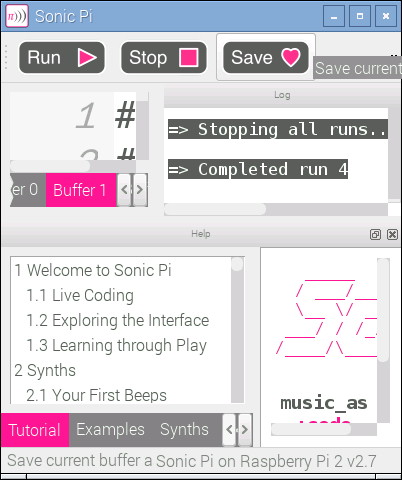
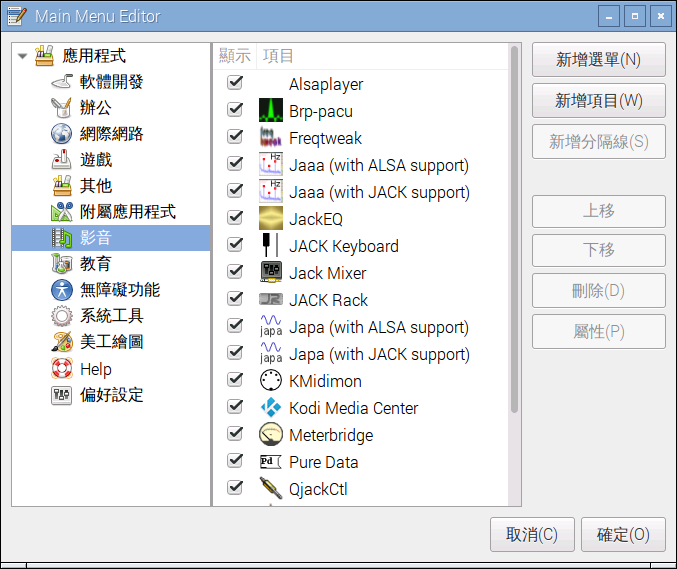
![JACK Audio Connection Kit [(default)] Active.畫面](http://www.freesandal.org/wp-content/uploads/JACK-Audio-Connection-Kit-default-Active.畫面.png)
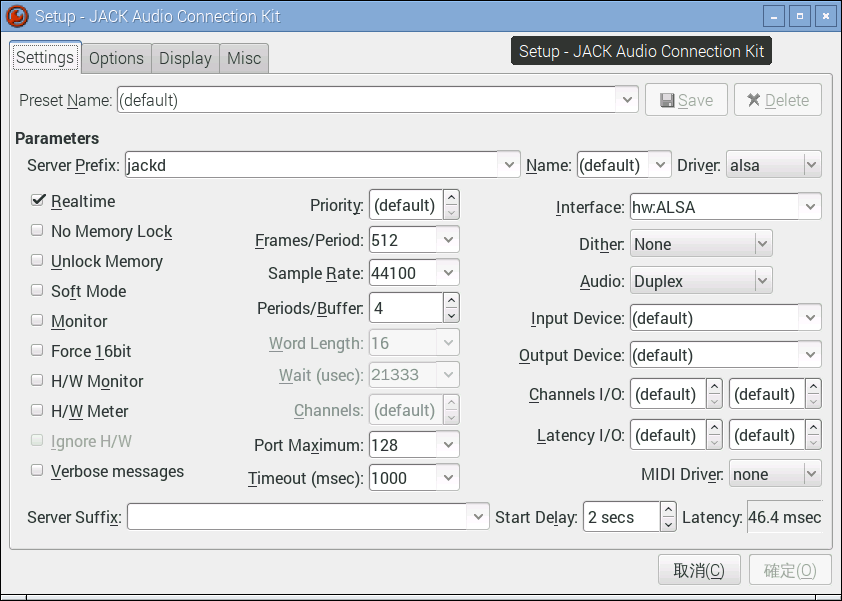
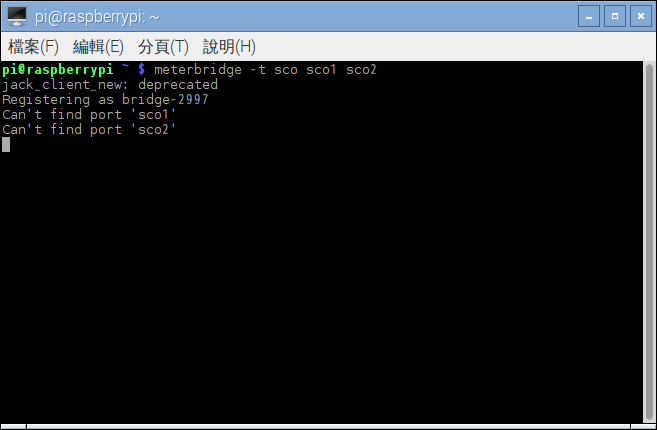
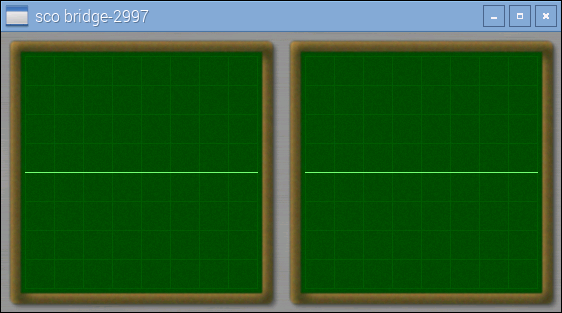
![Jack-Alsa Audio Analyser-0.8.4 [jaaa]_啟動](http://www.freesandal.org/wp-content/uploads/Jack-Alsa-Audio-Analyser-0.8.4-jaaa_啟動.png)
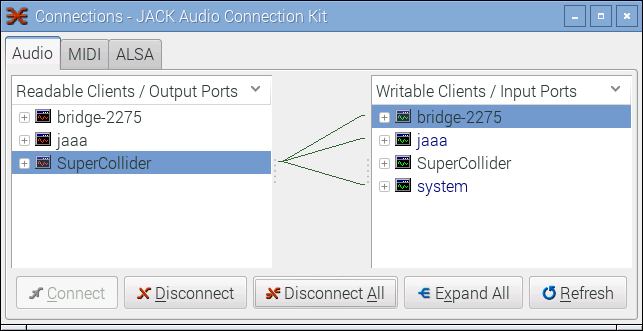

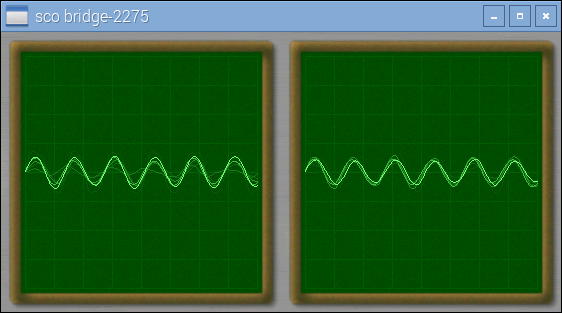
![Jack-Alsa Audio Analyser-0.8.4 [jaaa]_頻譜分析](http://www.freesandal.org/wp-content/uploads/Jack-Alsa-Audio-Analyser-0.8.4-jaaa_頻譜分析.png)
